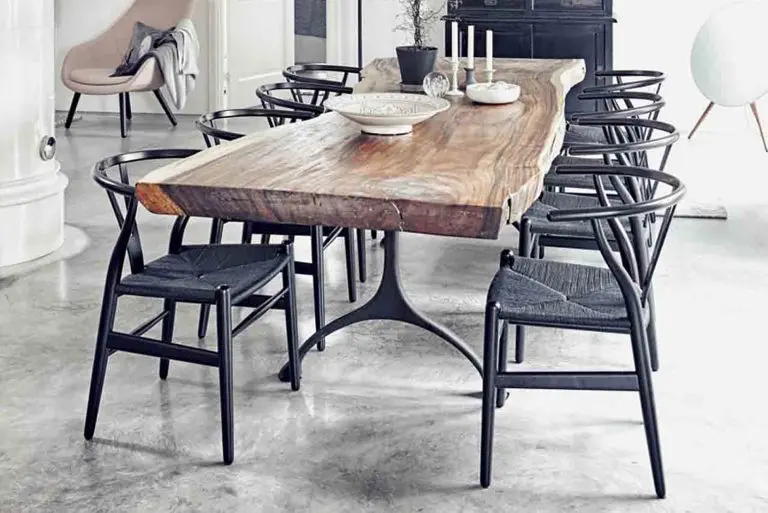No products in the cart.
Style
Despite our often dispassionate view of wood, it is a very important, valuable, but also limited resource. And while deforestation seems like an issue that is somewhere far away, at some other place and at some other time, it is a very real and present threat. In fact, we can often understate our impact on the world’s forests by wrongfully assuming that it is close to negligible. In reality, our impact is very much felt and with industrial technologies which allow much faster harvesting of timber, the dangers of deforestation are more direct and more present than ever in history.
For those of us who are working in industries directly dependent on the preservation of world’s forests, the topic of rampant deforestation is always on our minds. Very familiar with the consequences and causes, but also with the importance that forests have not just for our industry, but also for humanity and Earth’s ecosystem as a whole, we made some important and hopefully long-reaching steps to develop our own sustainability strategy.
Is there sustainable wood?
One might argue that any industry dependant on timber as a raw material can hardly be sustainable and must be leaving a rather destructive mark on the global ecosystem. However, this isn’t necessarily true. Not only does sustainable timber exist, but it has also been legally defined in Europe. This term refers to the wood that comes from so-called sustainably managed forests, forests that rely on stewards who took on themselves the tasks of reforestation and prevention of illegal logging and damage to the forest’s ecosystem. When done properly, sustainable management of forests will allow the use of their resources without impacting the total number of trees as they are renewed according to precisely developed and carefully controlled plan.
- Timber from sustainably managed forests
- Fast-growing types of wood can be easily replenished
- Endangered tree species are under special protection
On top of that, not all types of wood are equally sustainable. Some of them, such as pine are exceptionally fast growing, which means that they can be easily replenished in relatively short time. Other species such as oak grow much slower, so an advanced forest management plan is necessary for their sustainable use in industry. On the far side of this spectra are species such as ebony or teak which have been cut down to such an extent that they are classified as endangered and as such, they can be obtain only under special circumstances and with special permits.
Our sustainability strategy
For the demands of our wooden furniture, we obtain different types of wood almost daily, so it was clear from our earliest days that we need a solid and carefully thought out sustainability strategy that will allow us to continue producing beautiful wooden designs without leaving a dark mark on the planet’s ecosystems. However, there are also several things that we have going for us.
No timber from endangered species
For starters, as a company specializing in mid century modern furniture we never have to work with threatened species of wood. During the mid century era, furniture designers relied on readily available materials, so rare species of wood are not common. As a consequence, we can easily avoid the use of any endangered wood species and focus just on those which are readily available throughout Europe and not at risk.
- We don’t work with endangered and rare wood types
- All our designs are made out of wood species which can be easily replenished
Obtaining wood from certified sources
The dangers of deforestation have been recognised and acknowledged on an institutional level too, so there are many efforts within Europe to bring this dangerous trend under control and eventually reverse it. Luckily, there are two amazing non-profit organisation dedicated specifically to tackling this issue – The Forest Stewardship Council or FSC and Programme for the Endorsement of Forestry Certification or PEFC. Both of these organizations are involved in providing internationally recognised certificates to timber suppliers who are actively supporting responsible forestry and reforestation efforts. Certificate from either of these organisations is an assurance to us that our suppliers provide us with sustainable resources for the production of our wooden designs.
- Obtaining wood from certified suppliers
- Assurances from international non-profit organizations for preservation of forests
- Guaranteed sustainable resources
A helping hand from the East
While Europe is doing its part in preventing illegal logging and preserving its forest, those plans aren’t always effective enough to ensure a diminishable impact of sourcing timber. On the other hand, China is one of rare countries that managed to effectively reverse the deforestation trend and actually increase the total forested area of the country. This is achieved through truly massive large-scale reforestation efforts, sometimes called ‘the green wall of China’ in a reference to the most impressive architectural marvel of the East. And while not all types of wood we use in our designs can be grown on a large scale in China, some of them certainly can, so we try to obtain our wood from there.
- China is one of rare countries that has forests which are actually expanding
- A large source of sustainable timber
- Proximity of factories eliminates the cost of timber transport
By placing some of our workshops and factories near the rich Asian forests which are actually expanding in the recent years, we not only manage to obtain timber from sustainable sources, but also eliminate the transport costs, thus directly reducing the final cost of our wooden designs.



